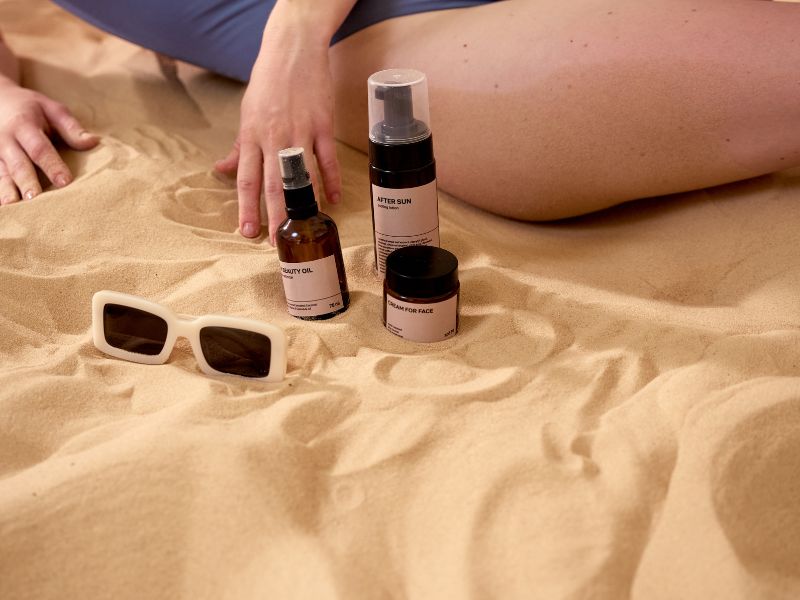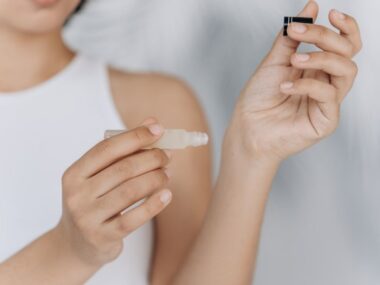Sunscreen is an essential part of modern skincare, praised for its ability to protect the skin from harmful ultraviolet (UV) rays that contribute to skin ageing, sunburn, and skin cancer. However, a question that often arises among sunscreen users is whether they need to wash it off at the end of the day. With the rising trend in multi-step skincare routines and the popularity of both mineral and chemical sunscreens, it’s important to understand whether sunscreen should be removed daily, the proper methods for doing so, and what happens to the skin if it’s left on overnight. This article will explore the science and skincare advice behind whether washing off sunscreen is truly necessary.
The Basics of Sunscreen and Its Role in Skincare
To fully grasp whether sunscreen needs to be removed, it’s important to understand the basics of sunscreen types and how they function on the skin. Sunscreens are typically classified into two main categories: chemical and mineral (or physical) sunscreens.
- Chemical sunscreens contain organic compounds, such as avobenzone, oxybenzone, and octinoxate. These chemicals absorb UV radiation and transform it into harmless heat that dissipates from the skin’s surface. Chemical sunscreens tend to be lighter in texture and more cosmetically elegant, making them popular choices for everyday wear.
- Mineral sunscreens (e.g., zinc oxide and titanium dioxide) act as physical barriers that deflect and scatter UV rays. Mineral sunscreens are often thicker and may leave a white cast, but they’re valued for their broad-spectrum coverage and are considered suitable for sensitive skin types.
Regardless of type, both kinds of sunscreen serve as a protective layer on the skin’s surface, either through absorption or reflection of UV rays. Because of this, they are designed to adhere to the skin and resist removal through sweat or contact. This is especially true for water-resistant or sweat-resistant formulas.
Why It’s Essential to Remove Sunscreen
Sunscreen’s composition makes it effective at blocking UV rays but also challenging to remove. If not properly cleansed, residual sunscreen can lead to clogged pores, skin irritation, and breakouts. Here’s why it’s typically recommended to wash off sunscreen:
- Prevention of Pore Blockage and Acne Breakouts
Many sunscreens, particularly chemical ones, contain emollients, silicones, and occlusive agents that can trap sebum and bacteria on the skin. Over time, this can clog pores, leading to acne, blackheads, and whiteheads. For individuals prone to acne, leaving sunscreen on overnight can exacerbate these issues, making effective cleansing essential. - Avoiding Skin Irritation
While sunscreen is safe for daily use, leaving it on for extended periods may lead to irritation, particularly in individuals with sensitive skin. Ingredients in sunscreen, such as certain preservatives and UV filters, may cause dryness, itching, or inflammation if left on the skin for too long. This is particularly true for chemical sunscreens, as some UV filters can become irritants over time. - Maintaining Optimal Skin Health
Sunscreen interacts with environmental pollutants, sweat, and oil throughout the day, creating a layer that can trap these impurities on the skin’s surface. When left unwashed, these impurities can contribute to skin dullness, dehydration, and an overall imbalance in the skin’s pH. A clean face at night allows the skin to repair and renew without interference from residual products or contaminants.
How to Properly Remove Sunscreen
Effective sunscreen removal depends on the type of sunscreen you use and the rest of your skincare routine. Here are the most effective methods:
Using a Double Cleansing Method
The double cleansing method has become a gold standard in skincare, particularly for removing products like sunscreen and makeup that can be difficult to wash off. Double cleansing typically involves two steps:
- Step 1: Oil-Based Cleanser
An oil-based cleanser is ideal for dissolving sunscreen, as many UV filters are oil-soluble. Cleansing oils or balms effectively break down both mineral and chemical sunscreens without stripping the skin’s natural moisture barrier. This step is crucial for thoroughly removing sunscreen, especially for water-resistant formulas, which are formulated to withstand rinsing and sweating. - Step 2: Water-Based Cleanser
Follow the oil-based cleanser with a gentle, water-based cleanser to remove any remaining residues and impurities. This ensures that both sunscreen and any dirt, oil, or makeup are thoroughly washed away. For those with sensitive skin, a mild, sulfate-free cleanser is ideal to avoid irritation.
Micellar Water for Light Sunscreen Formulas
For lighter sunscreen formulations or touch-ups, micellar water can be an effective alternative. Micellar water contains micelles, tiny cleansing molecules suspended in water that can capture and lift sunscreen and impurities from the skin. This option may not be as thorough as oil cleansing but can work for sensitive skin types or as a quick first cleanse before a second step with a foaming or gel cleanser.
Face Wipes as a Last Resort
Face wipes are often not recommended as a primary method for removing sunscreen, as they may not fully remove all traces of sunscreen, especially if it’s water-resistant. However, in situations where access to water is limited, a wipe can serve as a temporary solution until a thorough cleanse can be performed. Opt for wipes that are specifically formulated for makeup and sunscreen removal to ensure effectiveness.
Potential Consequences of Leaving Sunscreen on Overnight
Failing to remove sunscreen before bed can lead to various skin issues, as it disrupts the skin’s natural repair and renewal processes that occur during sleep. The following are common skin concerns associated with not washing off sunscreen:
- Breakouts and Congested Skin
As mentioned, sunscreen can trap dirt, oil, and pollutants on the skin. Over time, this can clog pores, leading to an increased likelihood of breakouts. Even individuals with typically clear skin may find that neglecting sunscreen removal results in clogged pores or minor breakouts. - Compromised Skin Barrier
Skipping nighttime cleansing can compromise the skin’s barrier function over time, making it more susceptible to dehydration, sensitivity, and irritation. Without a clean surface, nighttime treatments and moisturizers are less effective, as they cannot properly penetrate the skin. - Dull and Uneven Skin Texture
When sunscreen, especially if combined with daily pollutants, is left on overnight, it can contribute to a lack of radiance in the skin. Dullness, uneven skin texture, and even pigmentation issues can become more prominent if sunscreen and impurities are left to accumulate.
The Importance of Cleansing with Mineral Sunscreens
Mineral sunscreens, which contain zinc oxide and titanium dioxide, are particularly challenging to remove due to their dense and often water-resistant properties. Additionally, mineral sunscreens can leave a white or chalky residue on the skin. Regular facial cleansers may struggle to fully remove mineral sunscreen, making the double cleansing method even more beneficial.
For mineral sunscreens, consider using a cleansing oil or balm as a first step. These products can emulsify and break down the thick sunscreen layer, allowing it to be washed away more effectively in the second cleansing step. Without proper removal, mineral sunscreens can build up in pores, leading to congestion and irritation.
How to Adjust Cleansing for Different Skin Types
Each skin type may require a different approach to sunscreen removal:
- Oily or Acne-Prone Skin
Those with oily or acne-prone skin benefit from a double cleansing routine to remove sunscreen and excess sebum. Look for oil-based cleansers that are non-comedogenic and won’t contribute to clogged pores. - Sensitive Skin
For sensitive skin, choosing a gentle oil-based cleanser followed by a mild, fragrance-free foaming cleanser can prevent irritation while ensuring sunscreen is removed. Avoid using harsh scrubbing tools or overly aggressive cleansers, as these may damage the skin barrier. - Dry or Mature Skin
Dry or mature skin may benefit from hydrating cleansing oils or creams that leave the skin soft and moisturized even after sunscreen removal. This skin type often requires a more nourishing approach, as it is prone to dehydration and sensitivity.
Debunking Common Myths About Sunscreen Removal
There are some myths surrounding sunscreen removal that can lead to confusion:
- Myth: Chemical Sunscreens Dissolve Naturally and Don’t Need Removal
This is false; even though chemical sunscreens work by absorbing UV rays, they don’t “dissolve” on the skin. Chemical sunscreens still need to be washed off to prevent potential skin irritation and clogging. - Myth: Water-resistant sunscreens Are Harder to Remove and Require Scrubbing
While water-resistant sunscreens may require a bit more effort, scrubbing is not necessary and can damage the skin. Oil-based cleansers effectively break down these products without the need for aggressive methods.
Final Thoughts
Washing sunscreen off at the end of the day is essential to maintaining healthy, clear, and well-functioning skin. Regular sunscreen use is a cornerstone of sun protection, but without proper removal, it can lead to a buildup of impurities and interfere with the skin’s natural renewal processes. The double cleansing method, which combines an oil-based cleanser with a water-based cleanser, is the most effective way to remove sunscreen, particularly water-resistant or mineral formulations. Taking the time to cleanse properly not only prevents skin issues like breakouts and irritation but also ensures that your skin remains resilient and glowing.






